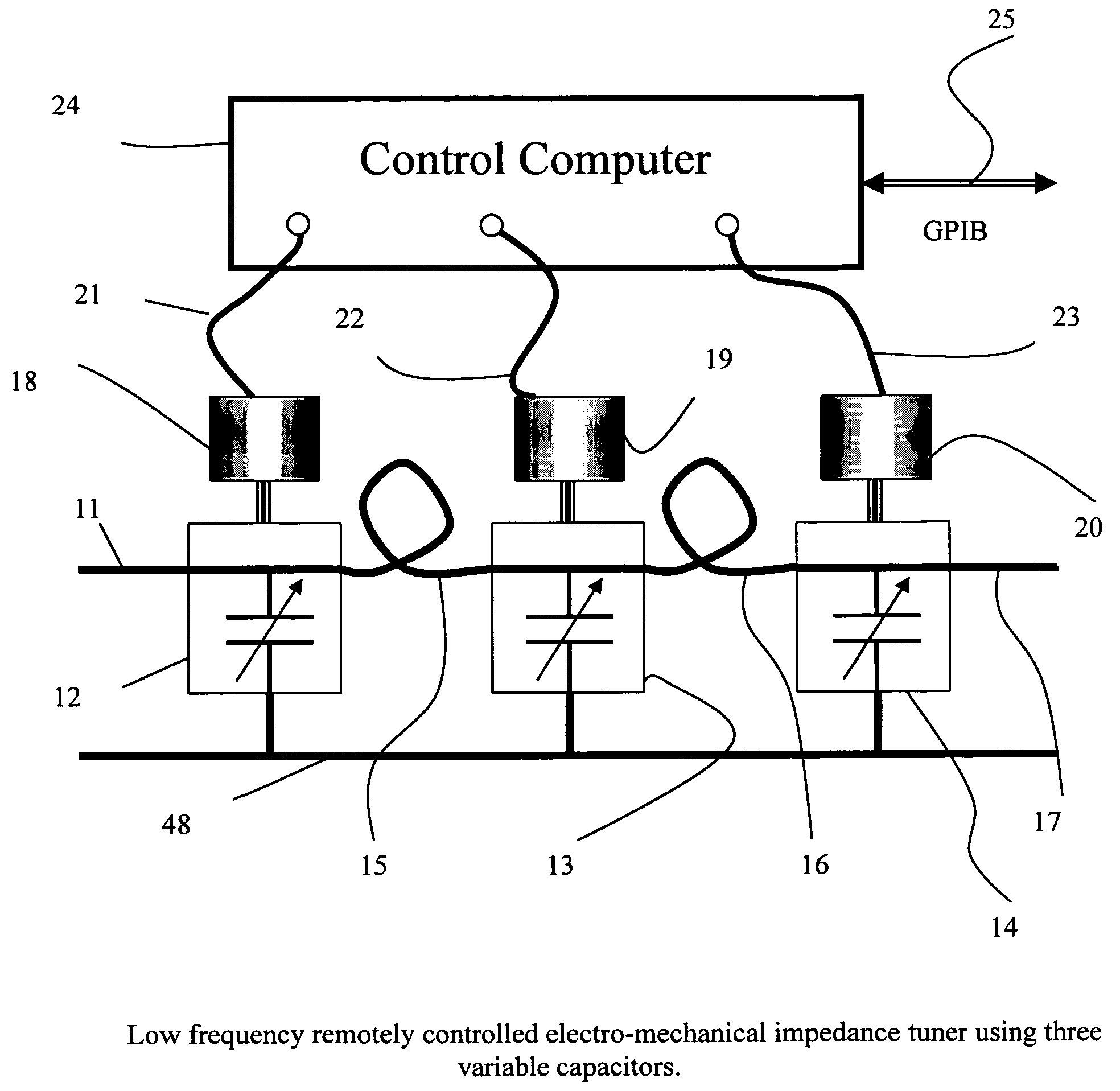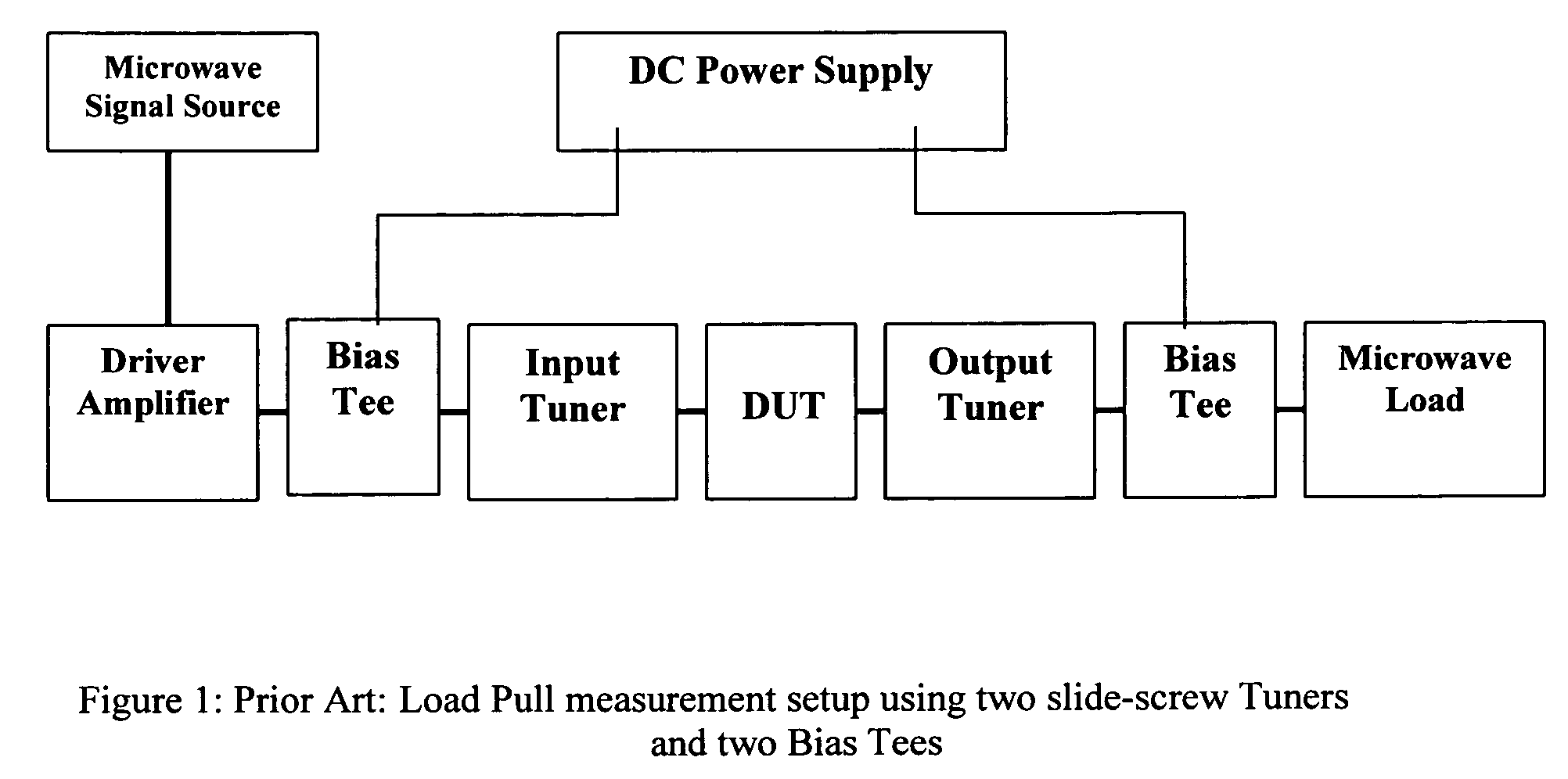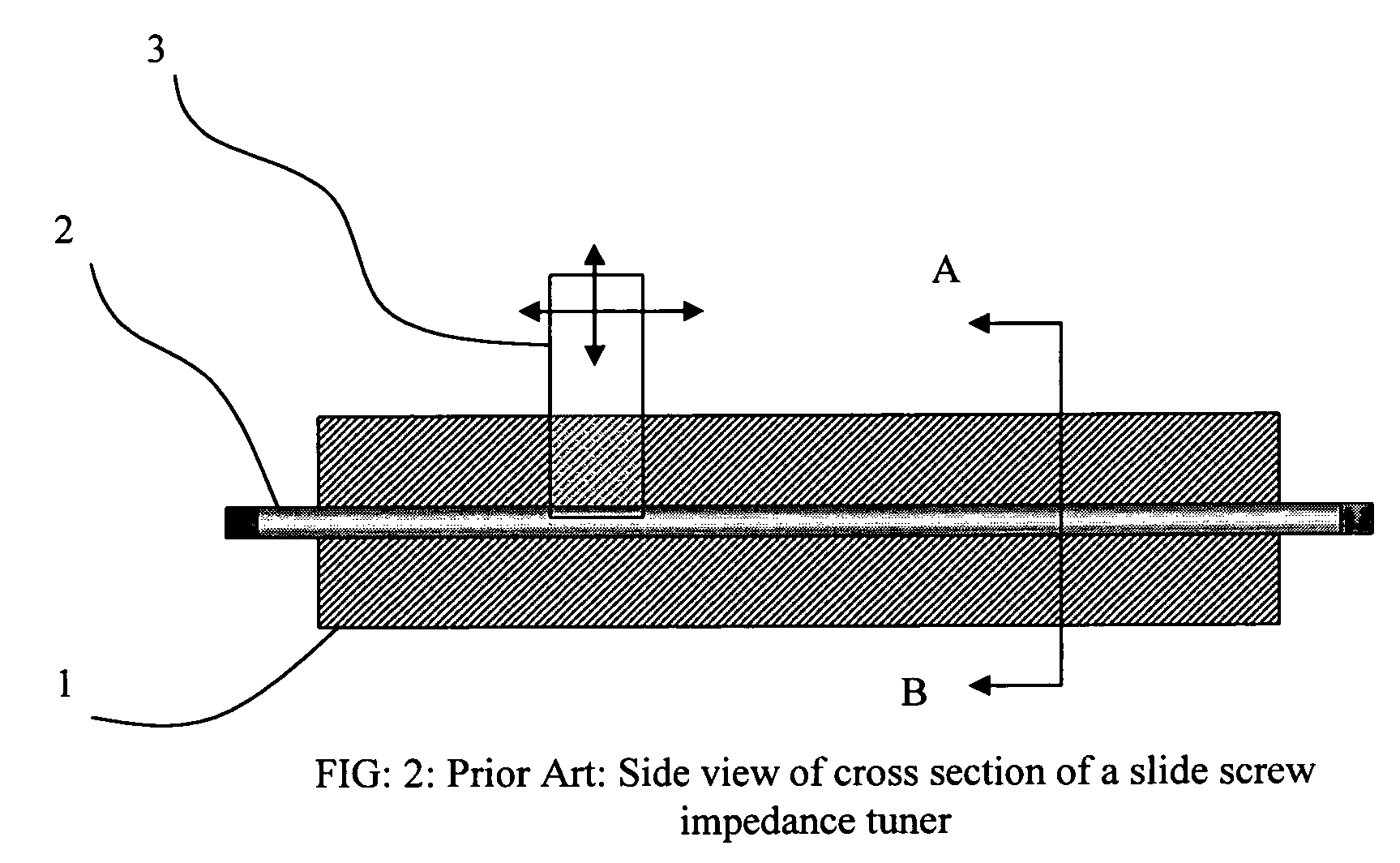Low frequency electro-mechanical impedance tuner
a low-frequency electromechanical and impedance tuner technology, applied in the direction of impedence networks, instruments, measurement devices, etc., can solve the problems of prohibitive sizes, impossible to manufacture in one piece, and even unhandling of tuners, and achieve compact size and convenient manufacture.
- Summary
- Abstract
- Description
- Claims
- Application Information
AI Technical Summary
Benefits of technology
Problems solved by technology
Method used
Image
Examples
Embodiment Construction
[0043]This invention describes an electro-mechanical impedance tuner that can operate successfully at frequencies as low as 10 MHz and as high as 200 MHz. The reason for the low frequency limit lies in the fact that the required capacitance values are of the order of 2000 pF, a value which is not easily obtainable using mechanically adjustable capacitors with air as a dielectric. If higher value capacitors are available the concept is extendable to lower frequencies as well. Using dielectrically loaded capacitors (for instance with high dielectric oil or dielectric foil between the conductive plates) represents a valuable alternative for very low frequencies; the mechanics of such capacitors may though be prone to intense maintenance and demand expensive manufacturing.
[0044]The high frequency limit for this apparatus lies in the fact that the RF cables required to interconnect the capacitance blocks and the interconnections themselves will introduce insertion losses, which will degr...
PUM
 Login to View More
Login to View More Abstract
Description
Claims
Application Information
 Login to View More
Login to View More - R&D
- Intellectual Property
- Life Sciences
- Materials
- Tech Scout
- Unparalleled Data Quality
- Higher Quality Content
- 60% Fewer Hallucinations
Browse by: Latest US Patents, China's latest patents, Technical Efficacy Thesaurus, Application Domain, Technology Topic, Popular Technical Reports.
© 2025 PatSnap. All rights reserved.Legal|Privacy policy|Modern Slavery Act Transparency Statement|Sitemap|About US| Contact US: help@patsnap.com



